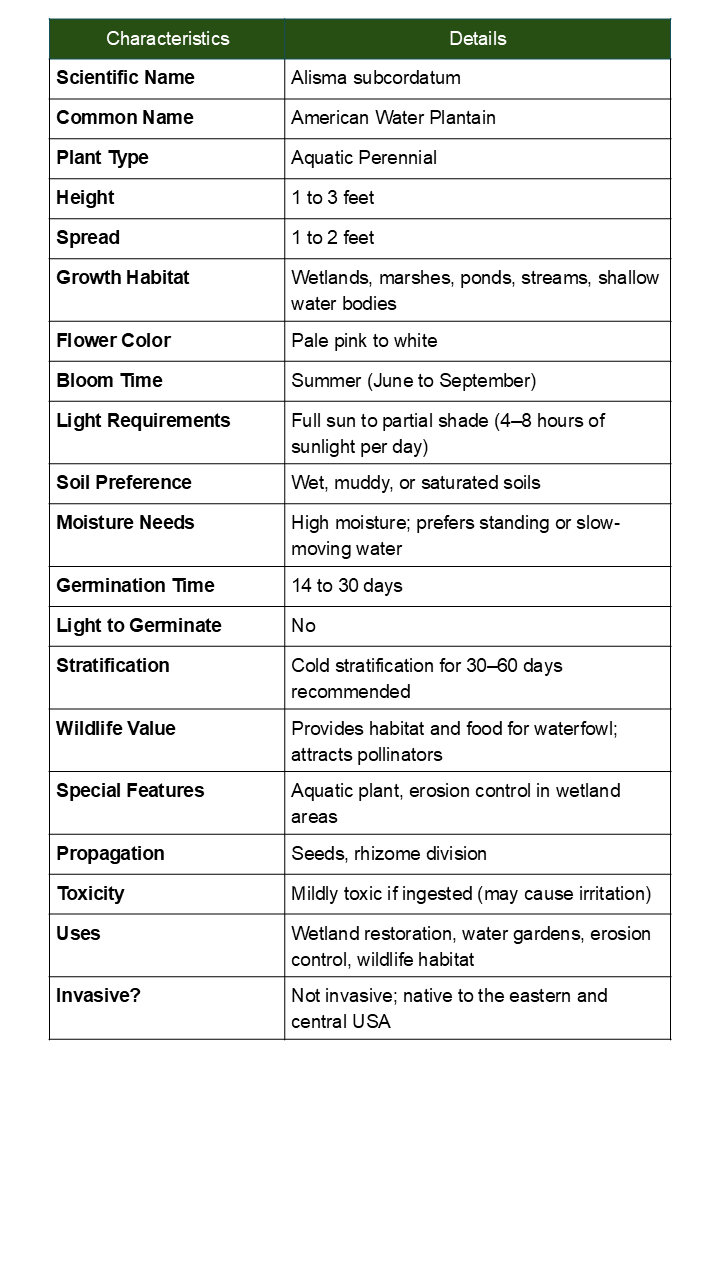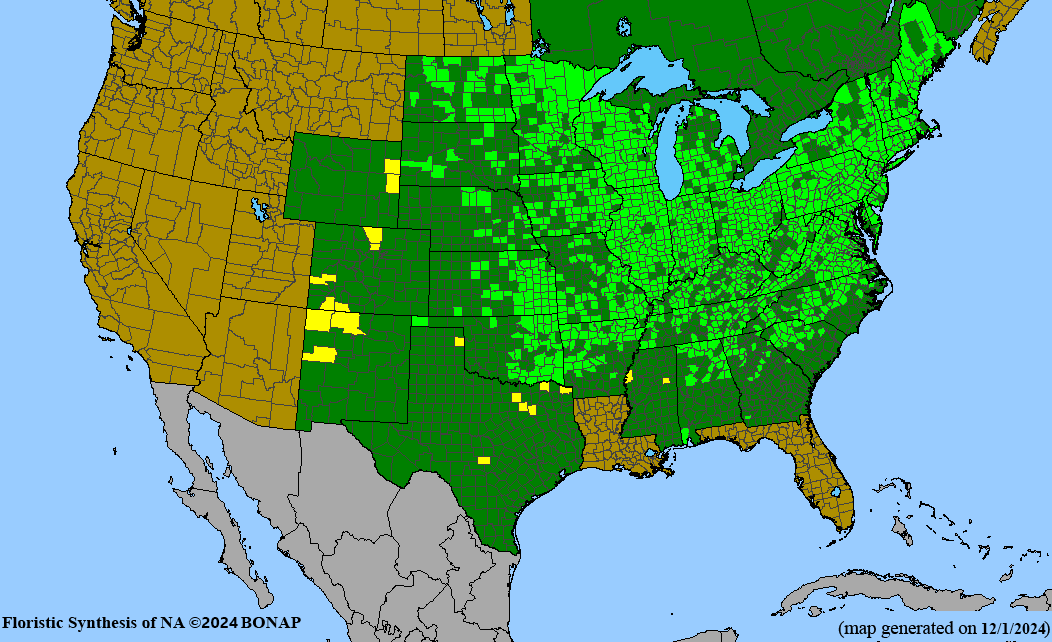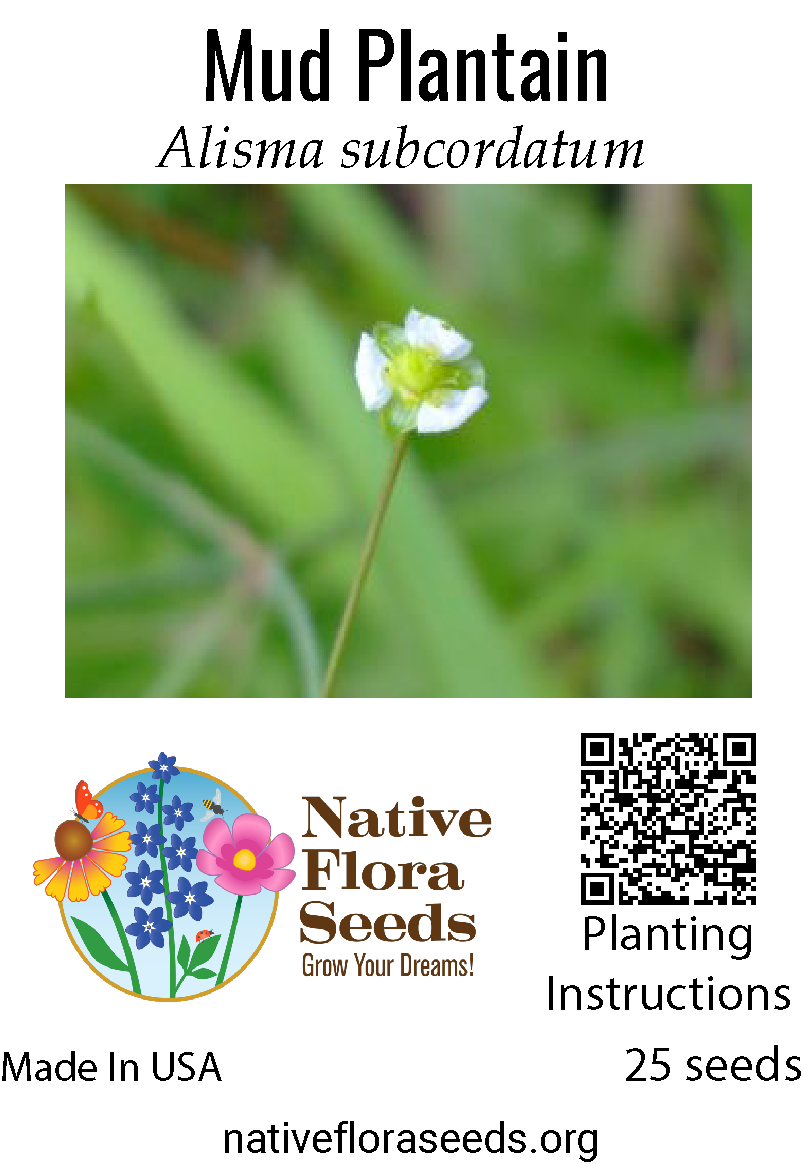Mud Plantain Seeds - Premium Heteranthera limosa for Aquatic Gardens
Regular price$4.00
/
Tax included.
1 review
Description
Unique Aquatic Beauty - Mud Plantain
Mud Plantain (Heteranthera limosa) is a fascinating native aquatic annual that thrives in muddy, shallow water environments. This distinctive wildflower produces small but charming blue to white flowers and serves as an important component of wetland ecosystems, providing habitat for aquatic wildlife and helping to stabilize muddy shorelines.
🌊 Key Benefits:
- Aquatic Specialist: Thrives in shallow water, mud flats, and wet margins
- Ecosystem Support: Provides habitat for aquatic insects and small wildlife
- Erosion Control: Helps stabilize muddy banks and shorelines
- Water Filtration: Assists in natural water purification processes
- Unique Habitat: Perfect for specialized wetland and pond edge plantings
- Self-Seeding: Annual that readily reseeds in suitable conditions
🌱 Plant Characteristics:
- Height: 4-12 inches tall, spreading along muddy surfaces
- Bloom Time: Summer through early fall
- Flowers: Small blue to white blooms with yellow centers
- Foliage: Heart-shaped to oval leaves on creeping stems
- Light: Full sun to partial shade
- Soil: Muddy, saturated soils or shallow standing water
- Zones: 4-9 (annual)
🎯 Perfect For:
- Pond edges and water gardens
- Wetland restoration projects
- Rain gardens and bioswales
- Mud flats and seasonal pools
- Aquatic wildlife habitat creation
- Educational wetland demonstrations
Growing Tips: Direct sow in muddy areas or shallow water in spring. Seeds require consistent moisture or standing water to germinate. Plants spread naturally along muddy margins and shorelines.
Each packet contains fresh, viable seeds with detailed growing instructions. Sustainably sourced from native wetland populations.



